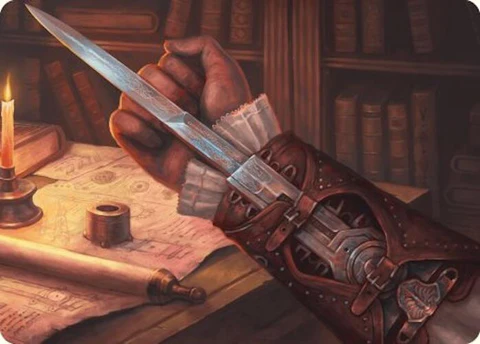Restarting New
I recently moved out of my house, which affected me and my work routine, I had to restart everything from the basics.
First, my goal was to buy, assemble, and build a powerful computer, I looked up PC parts and tools and I managed to make it work correctly after some trials and errors.
This is the first blog post from the new PC.
It is a good opportunity to relearn the basics of game design starting from the very first thing: choosing what software to use!
I downloaded Steam where I purchased Substance Painter 3D (2024 Edition) and downloaded it.
From Steam I installed Blender and OBS.
I highly recommend downloading the software above, because they are useful tools for creating 3D models with textures.
I also Installed Autodesk Maya, because I'm currently a student enrolled in Uclan I can use this software for some extra months.
I was playing Assassin's Creed 2 recently, and I captured an interest in the iconic Hidden Blade.
A drawing of Ezio I found Online
The question in my mind is: why is this design iconic?
Characters like Altair and Ezio have unique shapes and outlines that make them easily recognizable, even from a distance. Their hoods, robes, and weapons create memorable profiles.
The use of bold and contrasting colors helps characters stand out. Altair's white and dark tones symbolize stealth, while Ezio's red and white reflect nobility and passion.
The clothing is not just stylish; it’s functional. The designs facilitate movement, which is crucial for gameplay, making players appreciate the thought behind the aesthetics.
The Design of the Characters
Altair Ibn-La'Ahad
Altair is dressed in a simple yet striking white robe, symbolizing purity and the Assassin's Creed's values. His dark accents, like the hood and belt, create a strong contrast, making him stand out against the bright backgrounds of the game. The robe's design is practical for movement, reflecting his stealthy natureEzio Auditore da Firenze
Ezio, on the other hand, showcases a more elaborate outfit that reflects his evolution as a character. His white, red, and black robes are rich in colors, representing his noble status and the blood of his enemies. The intricate details, like the armor and the cape, make him look stylish and powerful. These elements highlight his personality as a charismatic leader and skilled assassin.
Both characters are designed to be memorable and iconic. Their distinct outfits reflect their backgrounds and make them easily identifiable in various settings. The combination of colors, patterns, and practicality in their designs allows players to connect with them, making them enduring symbols of the Assassin's Creed franchise.
The Hidden Blade
The Hidden Blade is a signature weapon in Assassin's Creed, perfectly fitting the series' themes of stealth, precision, and historical immersion. Here’s why it stands out:
Design Choice
The Hidden Blade is designed to be discreet and effective. Its sleek, compact form allows for easy concealment under clothing, making it an ideal weapon for assassins who rely on stealth. The design emphasizes the idea of subtlety over brute force, aligning with the Assassin's Creed philosophy.
Textures and Models
The textures of the Hidden Blade often reflect the materials available during different historical periods. From the polished metal of early models to the more ornate designs in later games, the craftsmanship showcases the weapon's evolution. The intricate details, such as engravings or embellishments, add authenticity and depth, enhancing its visual appeal.
Functionality
Functionally, the Hidden Blade is designed for quick, silent takedowns. Its retractable mechanism allows assassins to strike swiftly and retreat without drawing attention. This aligns perfectly with the gameplay mechanics of stealth and strategy, enabling players to approach missions with finesse.
Seamless Blending Across Timelines
The Hidden Blade's design adapts seamlessly to various historical contexts. Whether in the Middle Ages or the Renaissance, the weapon maintains its core concept while incorporating elements that reflect the era's technology and aesthetics. This versatility allows players to feel connected to different periods while using a familiar and iconic tool.
Overall, the Hidden Blade is not just a weapon; it embodies the essence of the Assassin's Creed series stealth, precision, and a strong connection to history. Its thoughtful design, intricate textures, and functional capabilities make it a perfect fit for the world of assassins.










Comments
Post a Comment